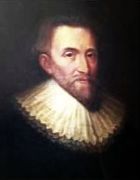Authors:
Historic Era: Era 1: Three Worlds Meet (Beginnings to 1620)
Historic Theme:
Subject:
Winter 2020 | Volume 64, Issue 1


Authors:
Historic Era: Era 1: Three Worlds Meet (Beginnings to 1620)
Historic Theme:
Subject:
Winter 2020 | Volume 64, Issue 1
Editor's Note: Historian James Horn, a frequent contributor to American Heritage, is president of the Jamestown Rediscovery Foundation. Portions of this essay appeared in his recent book, 1619: Jamestown and the Forging of American Democracy (Basic Books).
Convened with little fanfare or formality, the first gathering of a representative governing body anywhere in the Americas — the General Assembly of Virginia — met from July 30 to August 4, 1619 in the choir of the newly built church at Jamestown. Following instructions from the the colony’s financial backers, the Virginia Company of London, the meeting’s principal purpose was to introduce “just Laws for the happy guiding and governing of the people.” The assembly sat as a single body and was made up of the governor, Sir George Yeardley, his four councilors, and 22 burgesses chosen by the free, white, male inhabitants of every town, corporation, and large plantation throughout the colony.
No one in Virginia then or in the decades following could have possibly grasped the importance of what had occurred. Settlers understood that the assembly allowed them to have a hand in governing themselves, but they were motivated more by opportunities to approve laws sent by the Virginia Company from London and to propose their own legislation, than by abstract concepts of self-government or subjects’ rights and liberties.

Owing to numerous setbacks, the colony had struggled after its founding in 1607, leading the Company to introduce wholesale reforms in an effort to save it from collapse. Instigated by the highly respected parliamentarian and leader of the Virginia Company, Sir Edwin Sandys (pronounced Sands), propertied white males in the colony were granted remarkable political freedoms, as well as opportunities to share in the running of their own affairs. In addition, plans were put in place to promote a harmonious society in which diverse peoples and religious groups would live together side by side in peace to their mutual benefit.
Because so many influential parliamentary leaders were involved in the Company, proposals for Virginia were informed by the wide-ranging political debates taking place simultaneously at King James I’s court and in Parliament, which linked developments in the fledgling colony to domestic and international issues of momentous consequence. By 1619, the Virginia Company was recognized by many in high political circles as a laboratory for some of the most advanced constitutional thinking of the age.
Company leaders grounded their efforts to establish a godly and equitable society in the philosophical theory of the commonwealth. The term commonwealth, or the “common weal,” emerged in Europe in the late fifteenth and sixteenth centuries and brought together a variety of political and economic precepts that highlighted